Kahina – The Prophetic Berber Queen Who Resisted The Muslim Invasions Of The Numidia Kingdom
Ellen Lloyd - AncientPages.com - The legendary Berber Queen Kahina was a strong woman with the courage and will to resist the Muslims when her kingdom was invaded. The odds of succeeding were low, but being a great warrior and military leader, she did what was in her power to protect her people from a hostile force.
Dihya, whose Arabic Al-Kahina name can be translated as 'the diviner," was believed to be capable of foreseeing the future. She was born in the 7th century in modern Algeria and ruled a free Berber state known as Numidia.
There are many historical stories and legends about the Berber Queen Kahina who became a heroine in her country. Credit: Adobe Stock - Warpedgalerie
Many historical accounts mixed with unconfirmed legends make it hard to determine the true origin of the brave Berber Queen Kahina. Some historians suggest she may have been of Jewish origin, but most scholars think she was a Christian.
According to Arabic sources, Kahina was credited with prophetic abilities and was believed to be a sorceress. Even her physical appearance and family ties are based on doubtful accounts. She may have a large woman with long hair and possibly three sons. There is no credible historical information about her parents. Some think she was adopted.
When defending her kingdom Numidia, she showed outstanding braveness, which is why Al- Khanina became an Algerian heroine.
According to Arabic sources, Al- Khanina and Kusayla (Kusaila), a 7th-century Berber Christian king of the kingdom of Altava and leader of the Awraba tribe of the Imazighen, fiercely resisted the Muslims, and both are presented as Algerian heroes.
"North Africa had been under a foreign yoke. The Berbers, anxious for liberty and freedom, were incessantly fighting the invaders. Such was the case with the Berbers under the leadership of Kusayla and the Kahina during the Arab conquest. But this time, the Berbers did not know the intentions of the Arabs; they thought they were like other invaders seeking only to exploit their land. This is why the Berbers fought them in the beginning." 1
This was the wrong assumption, however. The Arab's conquest aimed to spread Islam and free the Berbers from the Byzantine Empire.
There are different opinions about why the Berbers resisted the Muslims. One possibility, according to historians, is that the Berbers "fought the Arabs not because they were Arabs, but because they were an unknown invader who, in the Berber's mind, were no different from the Romans." 1
Another explanation may be that "the Berber view of the Arabs undergoes a gradual transformation. Whereas at first, they regarded the Arabs as foreign oppressors, they in time came to view them as just and generous liberators, as the harbingers of civilization. The Berbers realized that the new conquerors were completely different from the previous ones: they also realized that for the first time they were considered masters. "1
Kusayla led the first resistance and established the Kingdom of the Berbers. After his death, Kahina assumed power and continued fighting the Muslims. She managed to burn a few villages and destroy crops, but her military encounter with Hasan ibn al-Nu'man, marching from Egypt and capturing the major Byzantine city of Carthage and other cities, was troublesome.
Statue of Dyhia in Khenchela, Algeria. Credit: Numide05 - CC BY-SA 1.0
In 698, the Arab general of the Umayyad Caliphate Hasan ibn al-Nu'man marched with his military forces into the Numidia Kingdom, which the ancient historical city of Djémila was part of. He had been told the region was protected by the Queen of the Berbers, Kahina.
Kahina managed to avoid a direct confrontation with Hasan ibn al-Nu'man for a while, but he followed her persistently until she finally accepted the fight. The clash was bitter, and the Kahina was fatally wounded.
There are many stories about Kahina, and some offer contradicting information making it hard to say how she died. According to some sources, the Berber Queen died fighting the invaders, sword in hand. Other accounts tell Kahina she committed suicide by swallowing poison rather than being taken by the enemy.
Whatever the truth, there is no doubt she fought courageously and became a legendary heroine in her country.
Updated on January 21, 2023
Written by - Ellen Lloyd – AncientPages.com
Copyright © AncientPages.com All rights reserved. This material may not be published, broadcast, rewritten or redistributed in whole or part without the express written permission of AncientPages.com
Expand for references- Hannoum, A. (1997). Historiography, Mythology and Memory in Modern North Africa: The Story of the Kahina. Studia Islamica,(85), 85-130
- Phillip C. Naylor - North Africa: A History from Antiquity to the Present
More From Ancient Pages
-
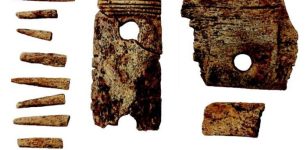 Large Anglo-Saxon Burial With Bodies And Roman Artifacts Found At Bicker Fen, Lincolnshire, UK
Archaeology | Aug 14, 2023
Large Anglo-Saxon Burial With Bodies And Roman Artifacts Found At Bicker Fen, Lincolnshire, UK
Archaeology | Aug 14, 2023 -
 Mysterious Mohenjo Daro Was Home To An Unknown Advanced Civilization Far Ahead Of Its Time
Civilizations | Apr 2, 2014
Mysterious Mohenjo Daro Was Home To An Unknown Advanced Civilization Far Ahead Of Its Time
Civilizations | Apr 2, 2014 -
 Chaco Canyon’s Piedra del Sol Petroglyph Depicts An Ancient Total Eclipse Visible In The Year 1097
Archaeology | Aug 12, 2017
Chaco Canyon’s Piedra del Sol Petroglyph Depicts An Ancient Total Eclipse Visible In The Year 1097
Archaeology | Aug 12, 2017 -
 3,300-Year-Old Bronze Figurine Of Canaanite God Unearthed At Lost Biblical City
Archaeology | Apr 12, 2020
3,300-Year-Old Bronze Figurine Of Canaanite God Unearthed At Lost Biblical City
Archaeology | Apr 12, 2020 -
 On This Day In History: ‘Sea King’ Ragnar Lodbrok Seizes Paris – On March 28, 845
Featured Stories | Mar 28, 2016
On This Day In History: ‘Sea King’ Ragnar Lodbrok Seizes Paris – On March 28, 845
Featured Stories | Mar 28, 2016 -
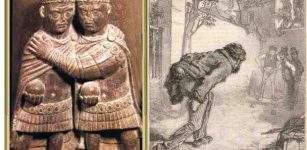 Ancient Egyptians Played Bowling 5,000 Years Ago
Ancient History Facts | Feb 22, 2016
Ancient Egyptians Played Bowling 5,000 Years Ago
Ancient History Facts | Feb 22, 2016 -
 Varggrottan: Mysterious ‘Wolf Cave’ Was Home To Neanderthals 130,000 Years Ago – Oldest Human Dwelling In Scandinavia
Featured Stories | May 15, 2023
Varggrottan: Mysterious ‘Wolf Cave’ Was Home To Neanderthals 130,000 Years Ago – Oldest Human Dwelling In Scandinavia
Featured Stories | May 15, 2023 -
 Do Neanderthal Genes Determine Our Skin Color And Sleep Patterns?
DNA | Aug 1, 2023
Do Neanderthal Genes Determine Our Skin Color And Sleep Patterns?
DNA | Aug 1, 2023 -
 220 Million-Year-Old Dinosaur Footprint Found On Wales Beach By Girl
Fossils | Feb 1, 2021
220 Million-Year-Old Dinosaur Footprint Found On Wales Beach By Girl
Fossils | Feb 1, 2021 -
 Who Was The Unknown Man Who Influenced Historical Events Shaping America’s Future Before Vanishing Forever?
Featured Stories | Jan 19, 2025
Who Was The Unknown Man Who Influenced Historical Events Shaping America’s Future Before Vanishing Forever?
Featured Stories | Jan 19, 2025 -
 2,550 Submerged Wooden Objects Recovered From The Templo Mayor Of Tenochtitlan
Archaeology | Jun 25, 2022
2,550 Submerged Wooden Objects Recovered From The Templo Mayor Of Tenochtitlan
Archaeology | Jun 25, 2022 -
 Focus On Turkana Boy: Modern Human Body Evolved More Recently Than Once Believed
Archaeology | Jul 8, 2020
Focus On Turkana Boy: Modern Human Body Evolved More Recently Than Once Believed
Archaeology | Jul 8, 2020 -
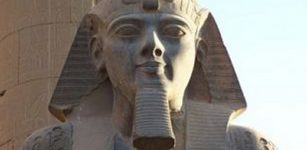 On This Day In History: Ramesses II Became Pharaoh Of Ancient Egypt – On May 31, 1279 BC
News | May 31, 2016
On This Day In History: Ramesses II Became Pharaoh Of Ancient Egypt – On May 31, 1279 BC
News | May 31, 2016 -
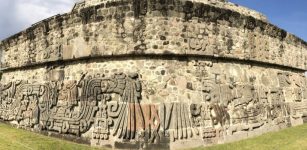 Xochicalco: Stunning Ruins Of Sacred City Linked To Maya and Aztecs Civilizations
Featured Stories | Feb 26, 2018
Xochicalco: Stunning Ruins Of Sacred City Linked To Maya and Aztecs Civilizations
Featured Stories | Feb 26, 2018 -
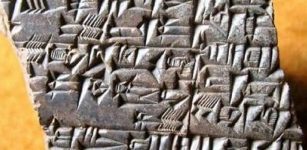 Sumerian Clay Brick With Inscription In Honor Of God Enki Returns To Iraq
Archaeology | May 5, 2015
Sumerian Clay Brick With Inscription In Honor Of God Enki Returns To Iraq
Archaeology | May 5, 2015 -
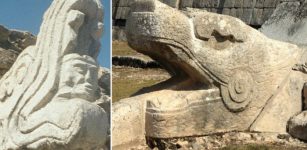 Kukulkan (Quetzalcoatl): Feathered Serpent And Mighty Snake God
Featured Stories | Feb 7, 2017
Kukulkan (Quetzalcoatl): Feathered Serpent And Mighty Snake God
Featured Stories | Feb 7, 2017 -
 120,000-Year-Old Bone Etchings – Evidence Of The Earliest-Known Use Of Symbols
Archaeology | Feb 3, 2021
120,000-Year-Old Bone Etchings – Evidence Of The Earliest-Known Use Of Symbols
Archaeology | Feb 3, 2021 -
 Mythical Helen Of Troy: Beautiful Wife Of King Menelaus Of Sparta
Featured Stories | Jul 5, 2019
Mythical Helen Of Troy: Beautiful Wife Of King Menelaus Of Sparta
Featured Stories | Jul 5, 2019 -
 Oldest Known Spearthrowers Found At 31,000-Year-Old Archaeological Site Of Maisières-Canal
Archaeology | Nov 6, 2023
Oldest Known Spearthrowers Found At 31,000-Year-Old Archaeological Site Of Maisières-Canal
Archaeology | Nov 6, 2023 -
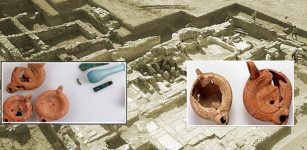 Advanced Heating System Discovered In Ruins Of Metropolis ‘City Of Mother Goddess’
Archaeology | Nov 17, 2019
Advanced Heating System Discovered In Ruins Of Metropolis ‘City Of Mother Goddess’
Archaeology | Nov 17, 2019


